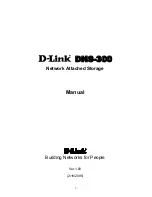
Chapter 2
SC-2070 Board
© National Instruments Corporation
2-3
SC-207X Series User Manual
To
Input
Multiplexer
AIGND
+ Channel
- Channel
+5 V
A
B
C
D
+
-
E
F
G
Factory-Installed
Jumpers
Figure 2-2. Onboard Equivalent Circuit
The components are numbered differently for each channel. Table 2-1 lists the components in each
channel and their correspondence to the circuit shown in Figure 2-2.
Table 2-1. Component Positions in Each Channel
Channel
(Position in Figure 2-2)
Differential
Single-Channel
A
B
C
D
E
F
G
0
(0,8)
R2
R1
R5
R4
R3
R6
C2
1
(1,9)
R8
R7
R11
R10
R9
R12
C3
2
(2,10)
R14
R13
R17
R16
R15
R18
C4
3
(3,11)
R20
R19
R23
R22
R21
R24
C5
4
(4,12)
R26
R25
R29
R28
R27
R30
C6
5
(5,13)
R32
R31
R35
R34
R33
R36
C7
6
(6,14)
R38
R37
R41
R40
R39
R42
C8
7
(7,15)
R44
R43
R47
R46
R45
R48
C9
When the board is shipped, jumpers are inserted in the E and F positions of the input network (see
Figure 2-2). These jumpers can be easily removed to build analog input signal conditioning circuits.
Several applications showing the use of these open component positions are discussed in Applications
later in this chapter.
Temperature Sensor
The SC-2070 board is equipped with an onboard temperature sensor for use with thermocouple cold-
junction compensation. This sensor, a National Semiconductor LM-35CZ, generates a voltage output
of 10 mV/
°
C, with an accuracy of
±
1
°
C. The sensor is jumper-selected on differential input channel
0. The MIO-16 board can be configured for either differential or single-ended inputs if this
temperature sensor is used. Jumper W1 is used to select either the temperature sensor or the external
screw terminals as the input source for differential channel 0. If the temperature sensor is chosen, any
signal conditioning that has been installed on channel 0 is ignored and has no effect. Figure 2-3 shows
the positions for jumper W1.
Содержание SC-207 Series
Страница 15: ......
















































